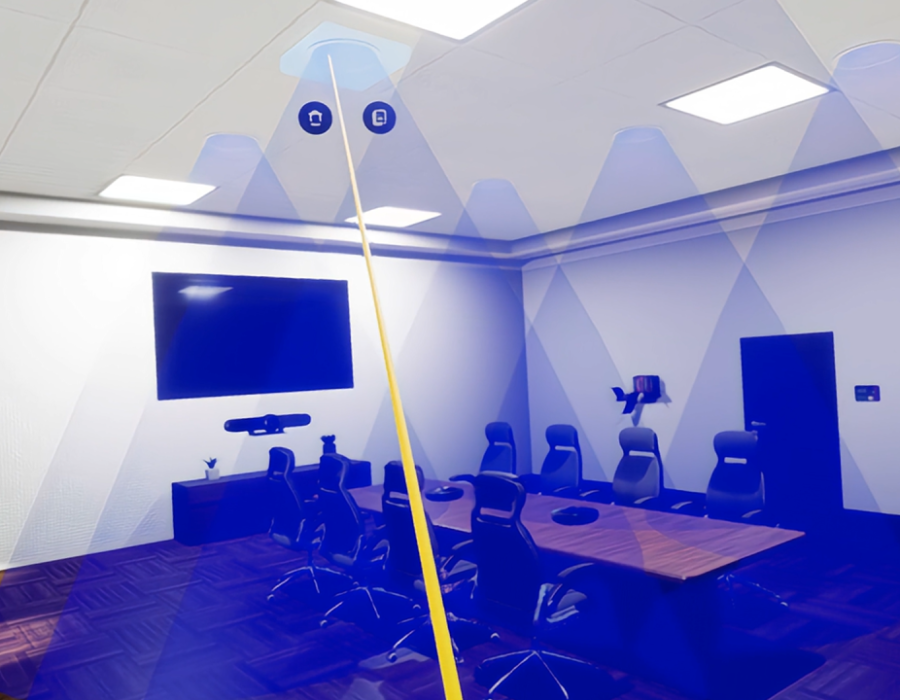XTEN-AV is a leading platform for professional AV design solutions, providing tools that help integrators and enthusiasts achieve the best sound quality in any space. One of the most important aspects of achieving high-quality audio in a room is the proper placement of ceiling speakers. Ceiling speaker placement affects sound clarity, balance, and coverage, and getting it right ensures an immersive audio experience for listeners.
Introduction
Ceiling speakers are a popular choice for both residential and commercial audio setups because they save space, provide uniform sound distribution, and maintain a clean aesthetic. However, improper placement can lead to uneven sound, echoes, and weak bass performance. To achieve the best results, careful planning and precise positioning are essential.
Using professional tools like XTEN-AV, AV professionals can simulate room acoustics, visualize speaker layouts, and determine the optimal positions for ceiling speakers. Ceiling Speaker Placement for Perfect Sound is not just about symmetry; it involves understanding room dimensions, listening zones, and acoustic principles to create a balanced and immersive experience.
1. Understand Room Dimensions and Shape
The first step in positioning ceiling speakers is understanding the dimensions and shape of the room. Rectangular rooms are generally easier to design for because sound reflections can be more predictable. Irregularly shaped rooms or rooms with sloped ceilings require additional planning.
Measuring the room accurately helps determine how sound waves will interact with walls, furniture, and other surfaces. XTEN-AV allows designers to input room dimensions and simulate audio coverage, ensuring that every corner of the room receives consistent sound.
2. Determine Listening Zones
Identifying primary listening areas is crucial for optimal ceiling speaker placement. In a home theater, for example, the main seating area should receive the most direct sound. In commercial spaces such as conference rooms or restaurants, multiple listening zones may exist.
Ceiling speakers should be positioned to cover these zones evenly. Tools like XTEN-AV allow designers to visualize listening areas and adjust speaker placement to minimize dead spots and maximize audio clarity. Properly planned listening zones ensure that all occupants experience consistent sound quality.
3. Consider Speaker Coverage and Dispersion
Ceiling speakers are designed with specific dispersion angles, which describe how sound spreads from the speaker. Understanding these angles is key to achieving uniform coverage. Speakers with wide dispersion angles cover larger areas but may sacrifice some sound intensity, while narrow dispersion angles provide focused sound but require more units for full coverage.
By analyzing coverage patterns in XTEN-AV, designers can select speakers and positions that balance intensity and coverage. This ensures even distribution and avoids hotspots or areas with weak sound.
4. Maintain Symmetry and Balance
Symmetry plays an important role in creating a balanced audio experience. Ceiling speakers should generally be installed in symmetrical positions relative to the room’s dimensions and main listening areas.
For example, in a living room with a central seating area, speakers should be placed equidistant from the walls and seating positions. Symmetrical placement reduces phase issues, echoes, and uneven sound, ensuring a natural listening experience throughout the room.
5. Optimize Distance from Walls and Corners
Placing ceiling speakers too close to walls or corners can result in exaggerated bass and unwanted reflections, while placing them too far can weaken sound intensity. As a general rule, ceiling speakers should be positioned at a distance from walls equal to at least one-third of the room’s width or length.
XTEN-AV allows designers to simulate reflections and adjust positions to minimize acoustic issues. Proper distance from walls and corners contributes to clear, balanced sound and enhances the overall audio experience.
6. Height and Angling Considerations
Ceiling height impacts the way sound propagates in a room. Higher ceilings may require speakers with greater power or angled designs to direct sound toward the listening zones. Adjustable or tilt speakers can help focus sound and prevent excessive reflections from hard surfaces.
Using professional AV design tools, designers can model different ceiling heights and angles to determine the optimal speaker orientation. Correct angling ensures that sound reaches listeners directly rather than bouncing off ceilings and walls, improving clarity and intelligibility.
7. Avoid Obstructions
Furniture, light fixtures, and ceiling vents can obstruct sound paths and degrade audio quality. Ceiling speakers should be positioned to avoid these obstacles while maintaining consistent coverage.
XTEN-AV’s visualization tools allow designers to account for obstructions and adjust speaker positions accordingly. Planning around potential barriers ensures uninterrupted sound flow and maintains an immersive listening experience.
8. Incorporate Multiple Speakers for Larger Spaces
In larger rooms, a single pair of ceiling speakers may not provide adequate coverage. Multiple speakers can be strategically positioned to create overlapping coverage zones, ensuring consistent sound throughout the space.
Professional AV design software can calculate optimal spacing between speakers based on room size, ceiling height, and desired audio intensity. This approach ensures uniform coverage and prevents areas of weak or uneven sound.
9. Test and Fine-Tune
Even with careful planning, real-world conditions may differ slightly from simulations. After installation, testing the system and fine-tuning speaker positions, angles, and volume levels is essential. Acoustic measurement tools and software can help verify that the system meets design expectations and provides the best possible audio experience.
Conclusion
Ceiling Speaker Placement for Perfect Sound is an art and a science. Proper planning, understanding room acoustics, and using professional tools like XTEN-AV are essential for achieving a high-quality audio experience. By considering room dimensions, listening zones, speaker coverage, symmetry, height, and obstructions, AV professionals can design systems that deliver clear, balanced, and immersive sound.
Whether for a home theater, conference room, or commercial space, thoughtful ceiling speaker placement ensures that every listener enjoys the best possible audio experience. With the right planning and professional design software, achieving perfect sound has never been easier.
Read more: https://www.linkedin.com/pulse/ultimate-guide-ceiling-speaker-placement-perfect-sound-singh-s8nne/





Comments